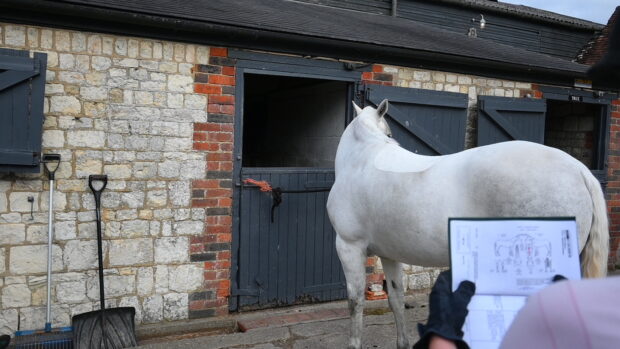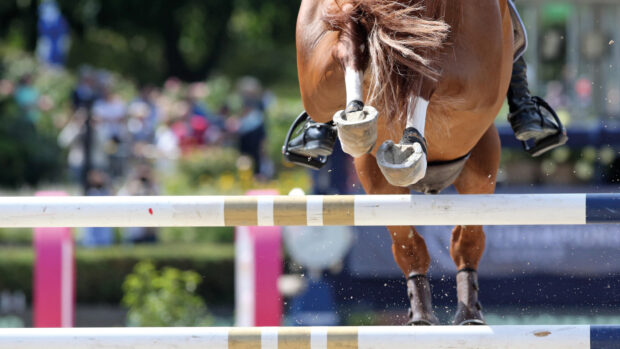Two ancient horse skeletons and a chariot dating back around 2,500 years have been unearthed in a historic burial ground.
The well-preserved discovery in Pocklington, East Yorkshire, has been dubbed “highly unusual” by experts, as it is the first time horses have been found within a “chariot burial”.
The find has put a pause on a major housing development while further excavations of the archaeological site take place. It was discovered in the final area that was to be excavated ahead of the building work.
The close proximity of one of the chariot’s wheels to the horse skeletons suggests the animals played a key role in the burial ceremony.

Credit: Henry Hayhurst-France on behalf of David Wilson Homes
“The chariot at Burnby Lane is only the 26th to be excavated in the country and the inclusion of horses raises the significance of the burial,” said Paula Ware, managing director at MAP Archaeological Practice.
“We’ve been working closely with David Wilson Homes to ensure that the site is recorded to it’s full potential.
“The archive of the excavations and the conservation of the artefacts will preserve the results for the benefit of future generations of academics and researchers.
“The discovery is an example of what can be revealed and discovered when house developers and archaeologists work together in advance of construction.”
A sword, shield, spears, brooches and pots were found in the initial excavations ahead of the first phase of the David Wilson Homes’ Pavilion Square development.
This most recent discovery came during ongoing excavations ahead of the second phase of the building project.
Article continues below…
You might also be interested in:

Princess Anne: ‘don’t ever apologise for horses’
The Princess Royal channelled inspiration from football legend

First type 1 diabetic given go-ahead to race
“We are very grateful to all at BHA

Parelli Natural Horsemanship: what’s the verdict?
This month marks the 35th anniversary of Pat
“The new findings are extremely exciting for the further clarity they bring to understanding Iron Age Britain and have put Pocklington firmly on the heritage map,” said Peter Morris, development director at David Wilson Homes.
“We’re delighted that we can play a role in exposing the rich history of this country prior to starting work on construction — we understand the importance of ensuring the findings are removed from site carefully so we can try and preserve these artefacts.
“As part of our strategy to work closely with the local community, we’ve been liaising with the Pocklington Historic Society to ensure that the findings remain in the local area alongside the original artefacts.
“A study is already underway — set to be the largest of an Iron Age population undertaken in the last 35 years — so the findings will help us to gain a better understanding of the culture and area at the time.”
Councillor Stephen Parnaby OBE, leader of East Riding of Yorkshire Council, added the finding is of “international significance”.
“This discovery is really exciting and, as the local planning authority, we would like to place on record our thanks and appreciation to David Wilson Homes for halting their works and allowing experts to study the site in detail and record this for future generations,” he said.
The second phase of the development is set to launch on 1 April.
For all the latest news analysis, competition reports, interviews, features and much more, don’t miss Horse & Hound magazine, on sale every Thursday





